Are you ready to step into the exciting world of making and consuming edibles? Let me help ensure your experience is safe, positive, and enjoyable with this guide that will teach you how edibles work, how to dose them, and how you can learn to make your own from the comfort of your own home.
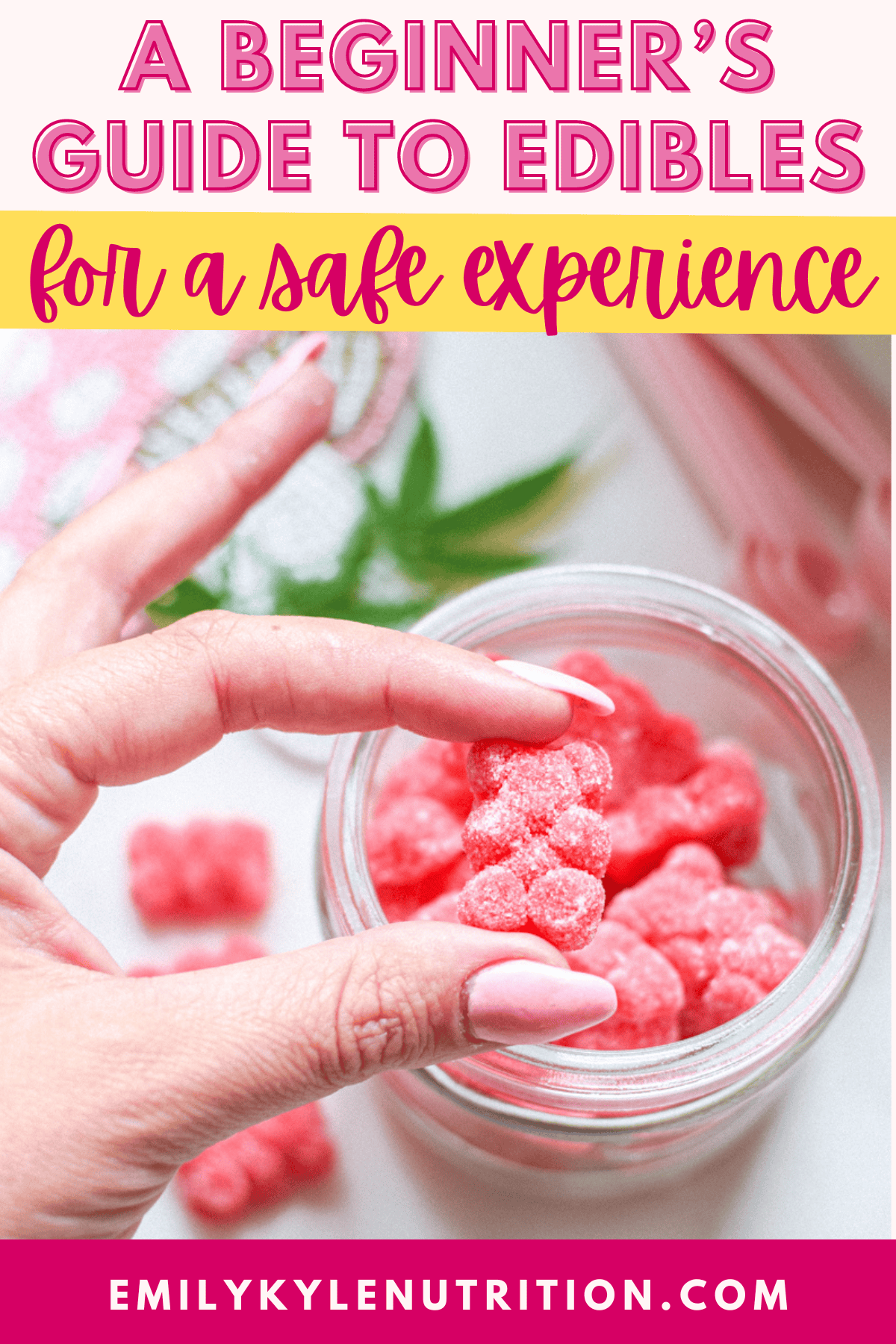
Table of Contents
Article Features
- What you need to know before consuming edibles
- Expert advice to ensure you have a safe and fun experience
- Want to make it easy? Start with my premium, high-quality cannabis edibles and have them delivered directly to your doorstep. Now shipping across the US!
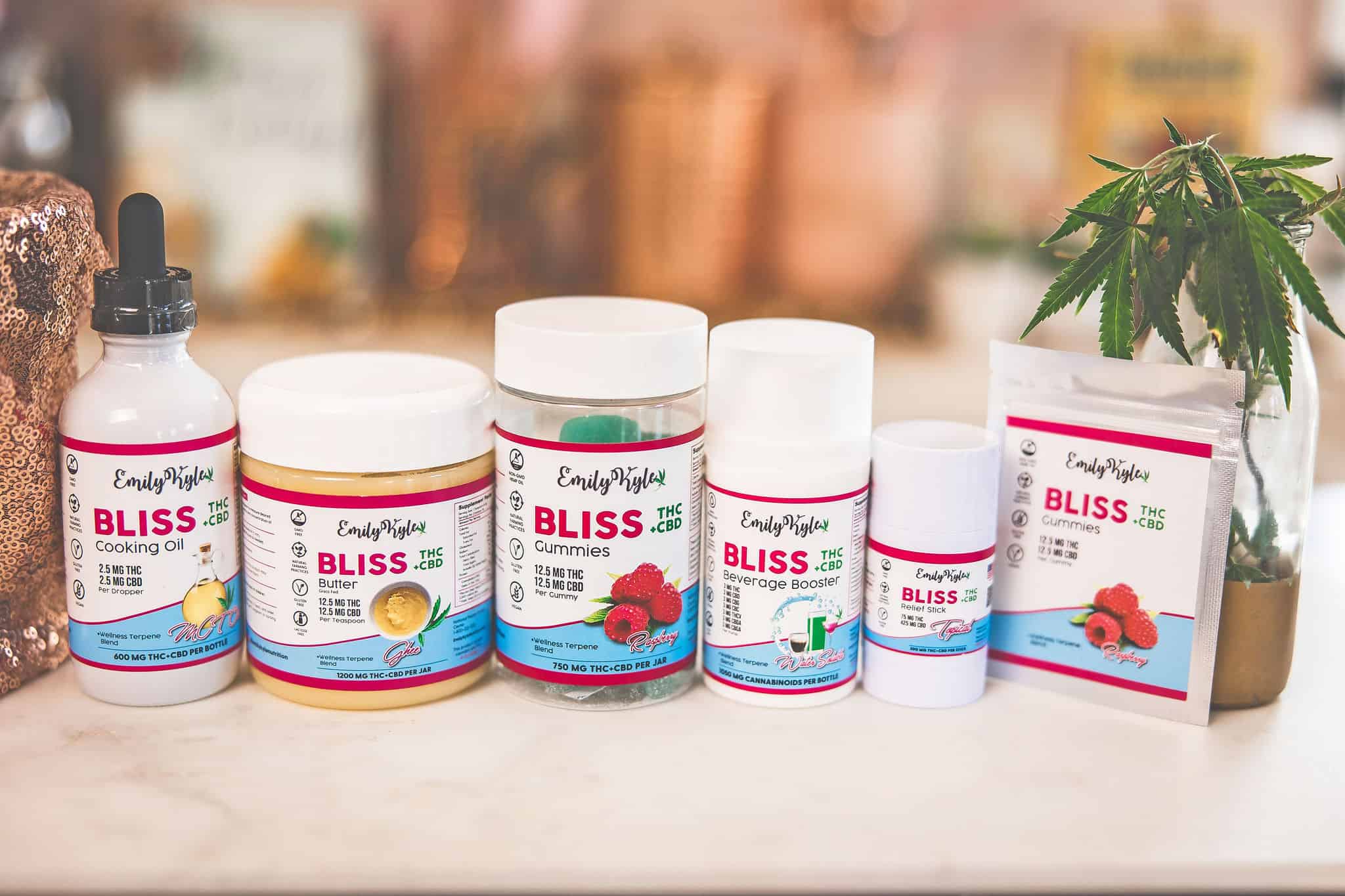
Why You Will Love This Guide
Have you ever tried edibles before?
Maybe you had a weed brownie in college and had a horrible experience.
Or maybe you’ve heard horror stories from a friend about an edible experience gone wrong resulting in a trip to the ER.
I’m here to tell you that yes, edibles can be a discreet, wonderful, enjoyable way to consume cannabis.
BUT…
They can also have some unwanted side effects if you don’t know what you’re getting yourself into first.
But don’t worry; the good news is I’m here to help!
Members of my Well With Cannabis Community love cannabis edibles for so many great reasons.
However, predicting an edible experience can be tricky, and it can take time, patience, and willingness to experiment to find your perfect dose.
My hope is that the recommendations I share in this guide can prepare you to have an experience that is enjoyable, rewarding, and, most importantly – safe.
In this guide, we will cover:
- Safety considerations – important!
- Why edibles can feel stronger
- Why the effects can last longer
- Safe dosing recommendations
- How to make edibles at home
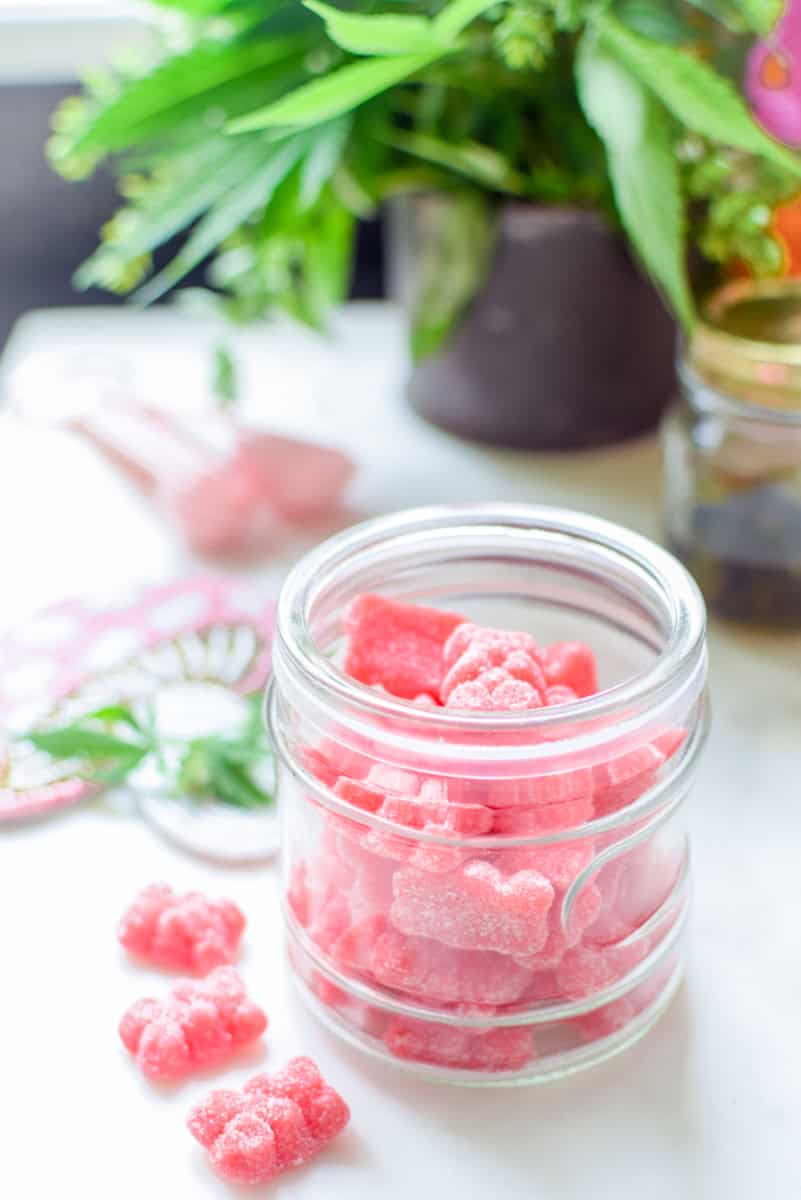
#1 – Safety Considerations
I know you want to get to the fun stuff, but before getting started, I want you to be aware of a few safety considerations.
This is important to ensure you have a safe and enjoyable experience.
- Consuming cannabinoids like THCA, CBDA, CBD, CBN, or CBG in edibles does not pose a safety risk because they do not produce intoxicating effects.
- Consuming cannabinoids like delta-8 THC or delta-9 THC can produce intoxicating effects, and consuming too much can result in unpleasant symptoms.
The most common unwanted side effects of consuming too much THC includes:
- Anxiety
- Diarrhea
- Red eyes
- Drowsiness
- Heart-palpitations
- Slow reaction time
- Short-term memory issues
- Disorientation or dizziness
- Tachycardia (rapid heartbeat)
- Increased appetite with dry mouth
The best way to avoid experiencing these unwanted symptoms is to control the amount of THC you consume.
We will discuss how to do this below in the dosing recommendations section.
Expert Tip: As you start your edible journey, you should always be aware of the presence of THC and how much you are consuming.
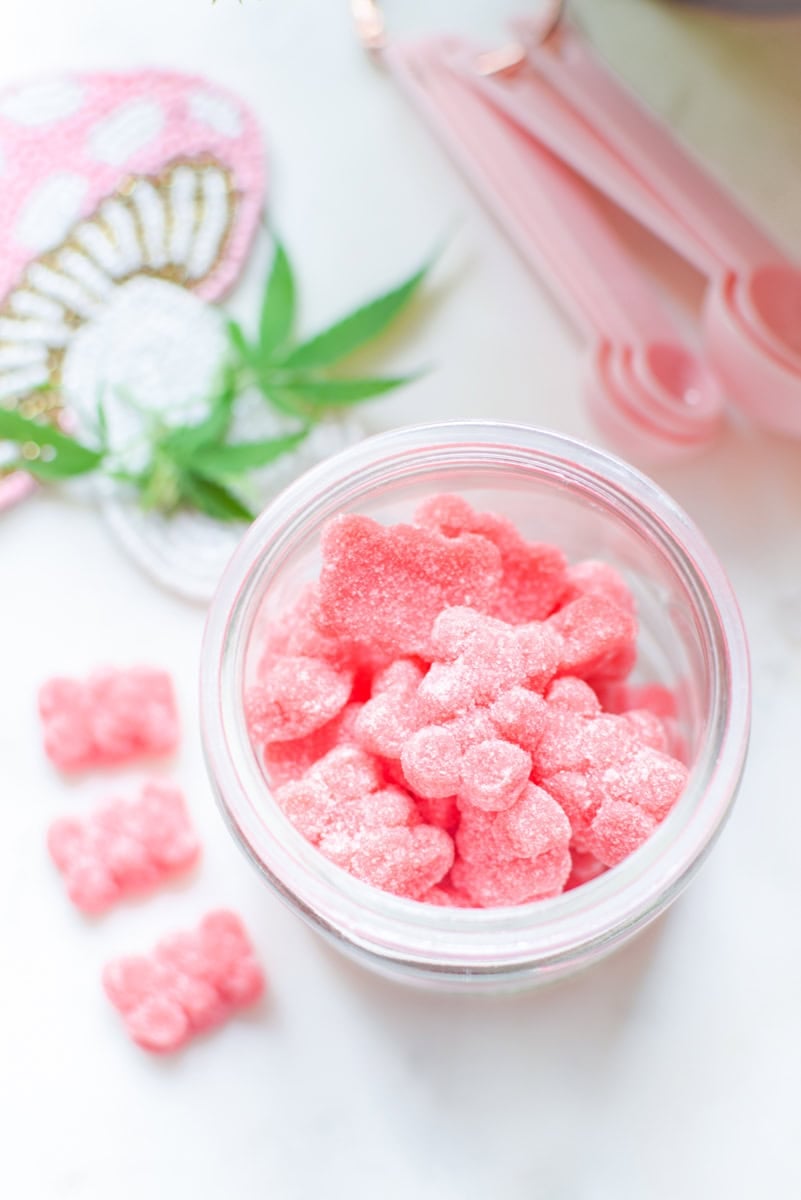
#2 – Edibles Can Feel Stronger
Often, when people come to me wanting to try edibles for the first time, they already have years of experience smoking.
They unknowingly assume that because they have developed a smoking tolerance, this will give them a higher edible tolerance – but this is not true.
Edibles that contain THC can produce stronger, more potent effects compared to other consumption methods, like tinctures, topicals, or inhalation.
There are even reports of people who feel like they have hallucinated as a result of consuming too much THC.
This is due to the way the liver processes the THC that is consumed.
Once THC has been eaten and digested, it travels to the liver, where it is turned into a completely different metabolite known as 11-OH-THC.
This is a potent, psychoactive metabolite that readily crosses the blood-brain barrier, creating strong intoxicating effects.
This is why it is so important not to over-consume THC when experimenting with edibles.
The tricky part is that each person has their own unique biochemistry, meaning the way the liver coverts THC to 11-OH-THC will differ from person to person.
On the flip side, a small portion of the population reports feeling no effect from cannabis edibles at all.
This could be because they lack the enzyme (or enough of the enzymes) needed to convert Δ9-THC → 11-OH-THC.
It is up to you to experiment and discover how your unique body reacts to cannabis.
Expert Tip: Your smoking tolerance is not correlated with your edible tolerance. Use caution with THC, even if you have experience consuming cannabis in other forms.
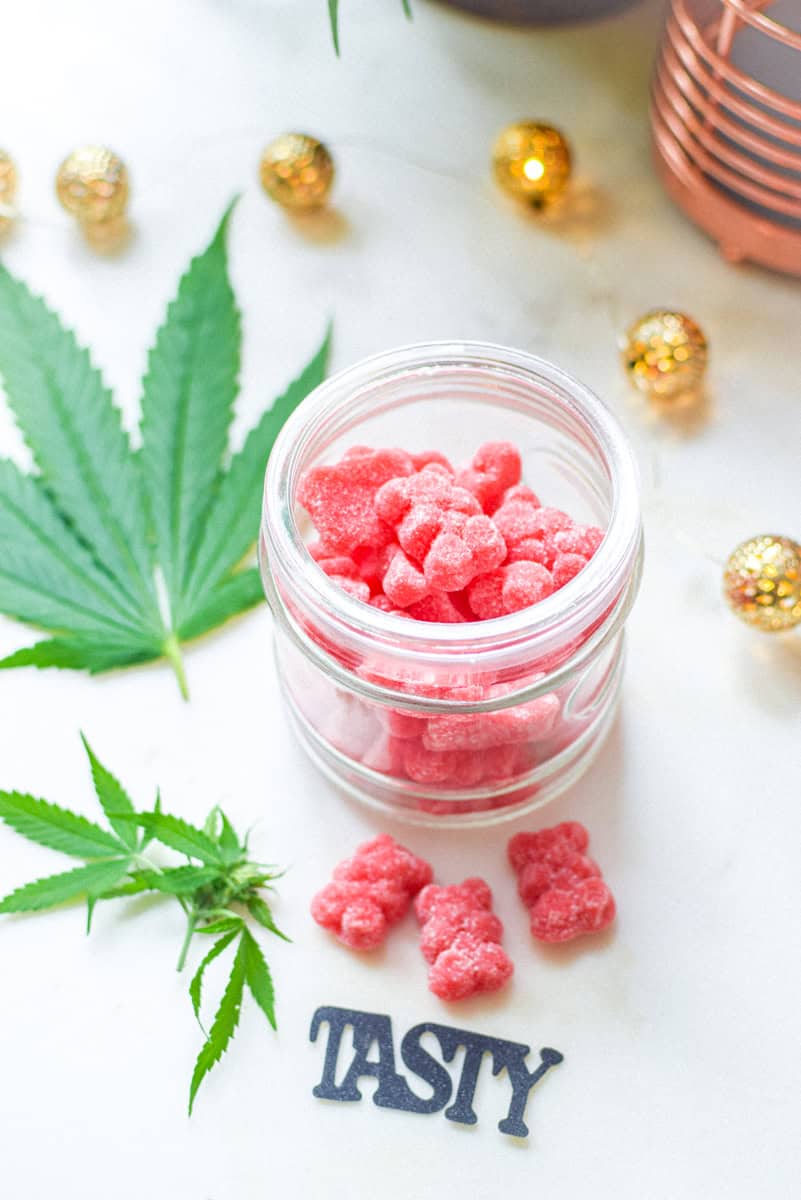
#3 – Edibles Last Longer
It can take a long time to feel the effects of edibles compared to say, smoking – and this is what gets people in trouble.
Edibles are slower to take effect because they need time to travel through the digestive system and then reach the bloodstream.
The time it takes to feel the effects can range anywhere from 30 minutes to 2 hours, and depends mostly on your unique body chemistry.
Even though the experience of effects can be delayed, they tend to come on stronger and then last longer.
These effects can last anywhere from 4-8 hours or more, although this varies from person to person and is highly dose-dependent.
This is why it is so important that you do not consume a second dose in a short amount of time if you’re not feeling the desired result.
It is recommended to wait at least two hours before attempting to consume a second dose.
If you consume a second dose too quickly, say 30 minutes after initial consumption, you run the risk of over-consuming and experiencing unwanted effects.
Other factors can also affect how long edibles stay in your system, including:
Expert Tip: While the effects take longer to feel, they can be stronger and more powerful. Always wait at least 2 hours before trying another dose.
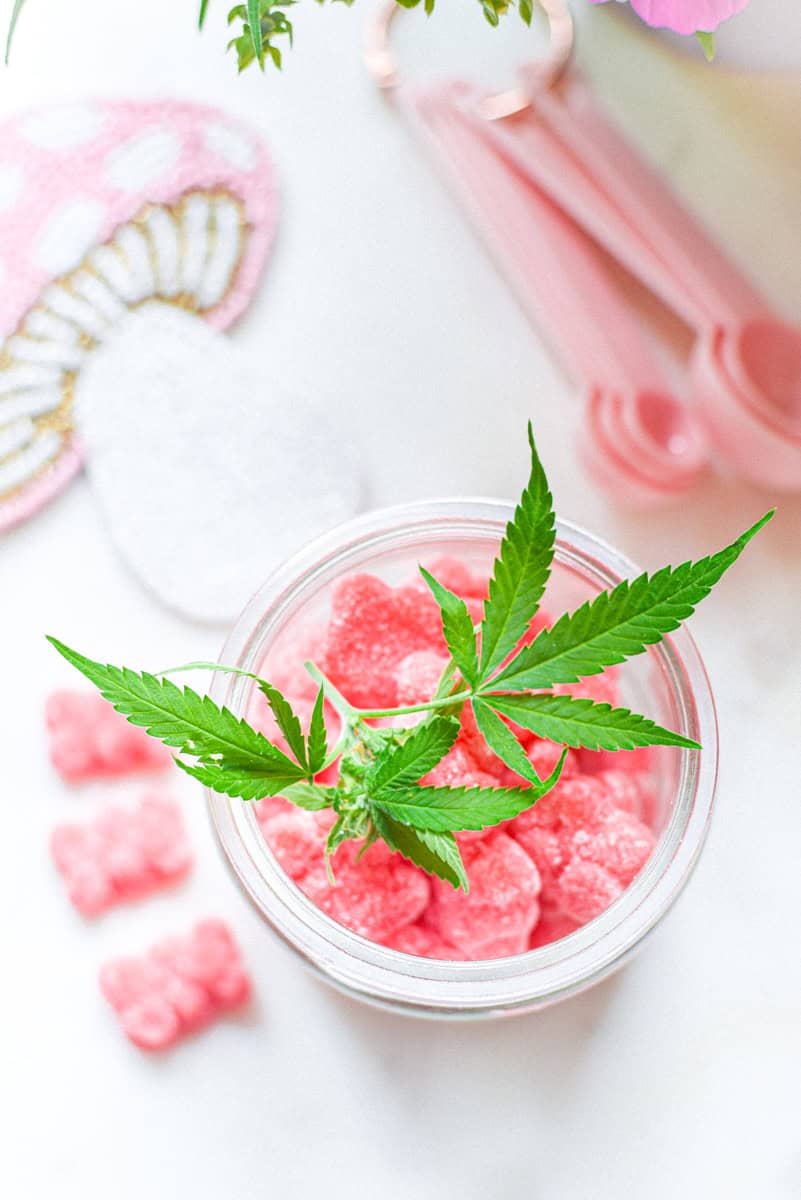
#4 – Dosing Recommendations
One of the most important things I want you to know about cannabis is that the way we consume it affects everyone differently due to our unique endocannabinoid systems.
This means that there is no such thing as standard dosing recommendations.
You and your identical twin could consume the same amount of THC and have very different experiences due to your unique physiology.
That is why it is important to always follow the golden rule of “start low and go slow.”
This means you start with one low dose first and then monitor your reaction.
A low dose of THC would be 5mg or less, and you could try 1-2mg for a microdose experience.
If you are new to edibles and are discovering your tolerance, I recommend starting with store-bought gummies with a measured dose.
This will make it easier to track and predict your reaction to THC while just getting started.
Also, remember to record the amount you consumed so you can go back and compare dosages if needed.
This will help you to repeat the good experiences and avoid bad ones.
Expert Tip: Always follow the golden rule: “Start low and go slow.” A microdose of 1-5mg THC is a good place to start. Find more dosing help here.
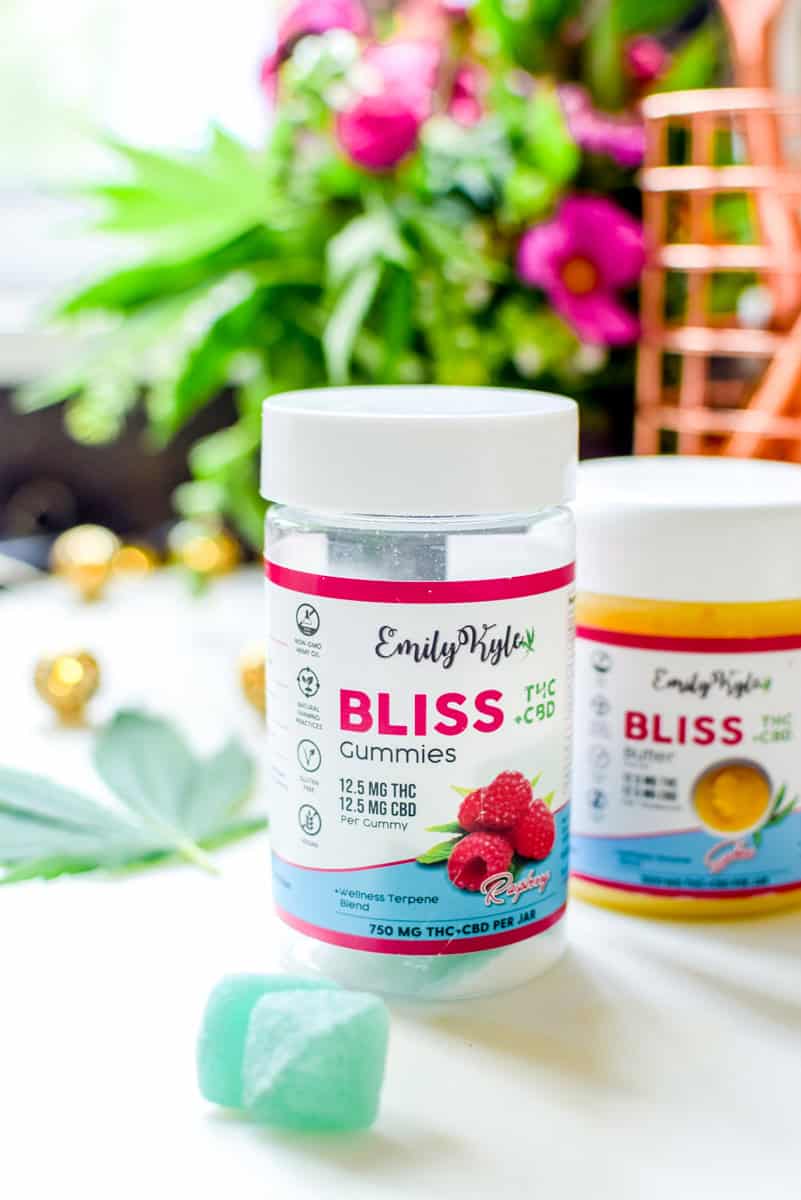
#5 – How to Make Homemade Edibles
Making your own edible recipes at home is a great experience and allows you to use a strain that is right for you.
Here are the most important things I want you to know before you jump into making and storing your own edibles at home.
Decide If You Want to Decarb
The first thing you need to know is that cannabis needs to undergo a simple process called decarboxylation to enjoy the active forms of CBD or THC.
Raw cannabis contains what is known as THCA and CBDA.
Like terpenes, these cannabinoids contain their own health benefits, however, these are not intoxicating – meaning they won’t get you high.
If you want to experience the effects of activated THC in your edibles, you will need to convert THCA → THC through the decarboxylation process.
Using heat is the most common way to decarb cannabis at home kitchen.
Here are my super simple guides to introduce you to the decarb process using your choice of an oven or an Instant Pot.
It really is as simple as putting the dried cannabis in an oven safe container, baking it at the right temperature, and voila – you’re ready to go!
Keep in mind, you will need to decarb almost all forms of plant material including:
Confused by all of the terminology? No worries, I’ve created this terms and abbreviations guide to help get you started.
Ways To Use
After deciding whether to decarb or not, it is easy to include cannabis into your meals in a variety of different ways.
Here, I will review some of the most popular ways you can begin to make edibles at home.
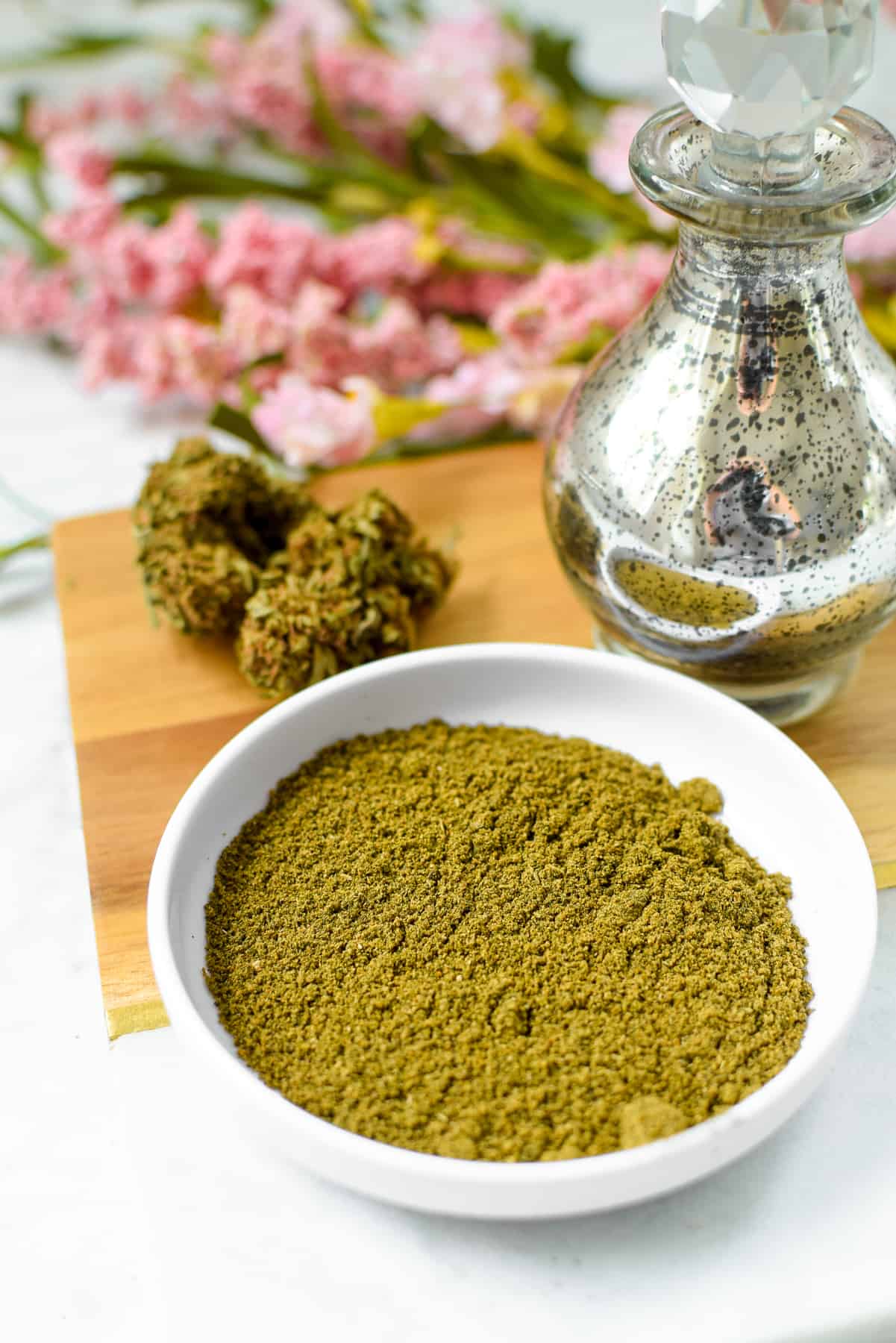
Just Decarbed Cannabis
After the decarbing process, you really can just add the plant matter directly to recipes, if you want.
Or you could use already vaped bud lefter from vaping flower.
This is an easy way to infuse food, but will depend on your taste and texture preferences.
For best results, it is recommended to grind the cannabis into a fine powder, a cannabis flour, if you will.
This can easily be stored at room temperature for a long time.
You can then add this ground cannabis directly to different recipes such as ranch dressing or taco seasoning or consume in a capsule.
Keep in mind, you only need to use a small amount in most cases, as the THC levels can be higher.
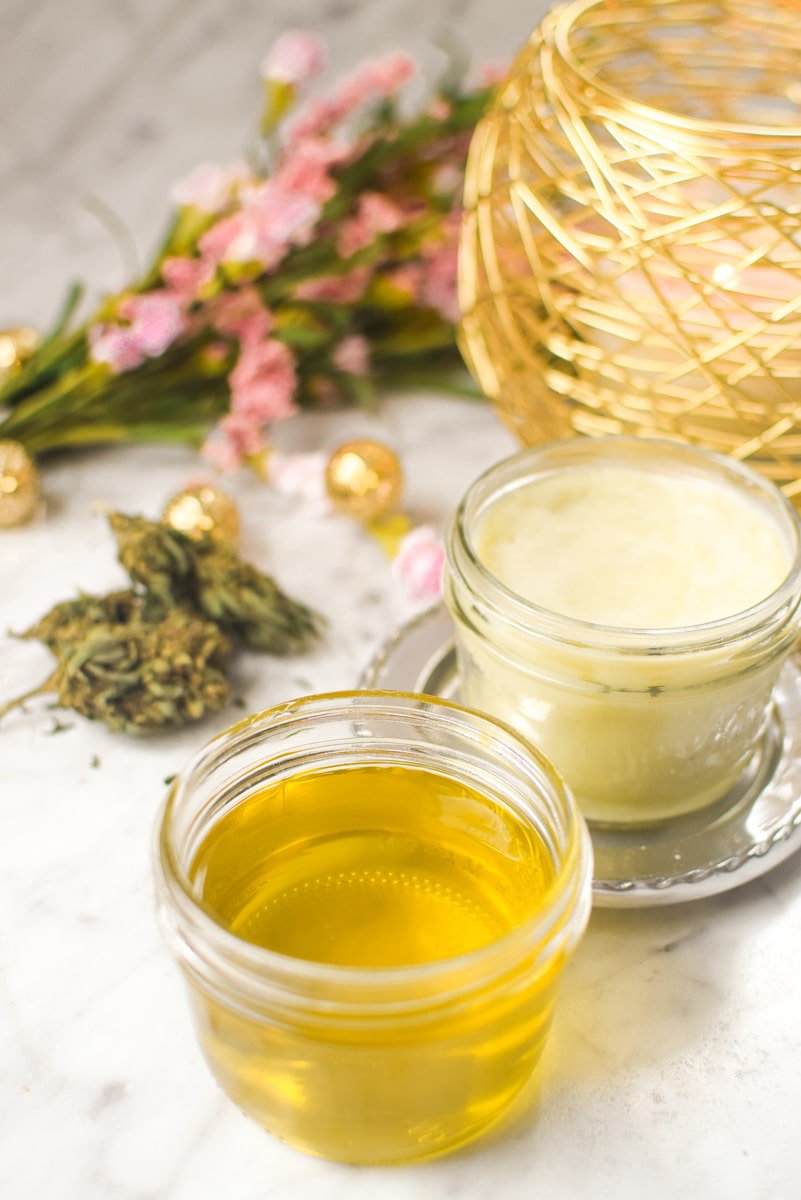
Infusions
Cannabis infusions are perfect because the high fat content help the cannabinoids from the trichomes bind to the fat.
This is why cannabis butter is so popular.
Making a cannabis infusion can be as simple as combining decarboxylated cannabis and cup of butter in a slow cooker or double boiler over low heat for a few hours.
You can also purchase an infusion machine to do the job for you.
Popular fat sources include:
Find instructions for how to make your own full-spectrum cannabis oil or butter in a crockpot or Instant pot here.
You can also determine how much weed you should use with this flower to oil ratio guide.
Once your oil infusion is made, you can use your weed butter or infused oil to make cannabis brownies with your favorite brownie mix or in your favorite recipe.
Needs some ideas? Check out this list of easy, no-bake cannabutter recipes to get started.
Keep in mind, you never want to microwave your cannabis.
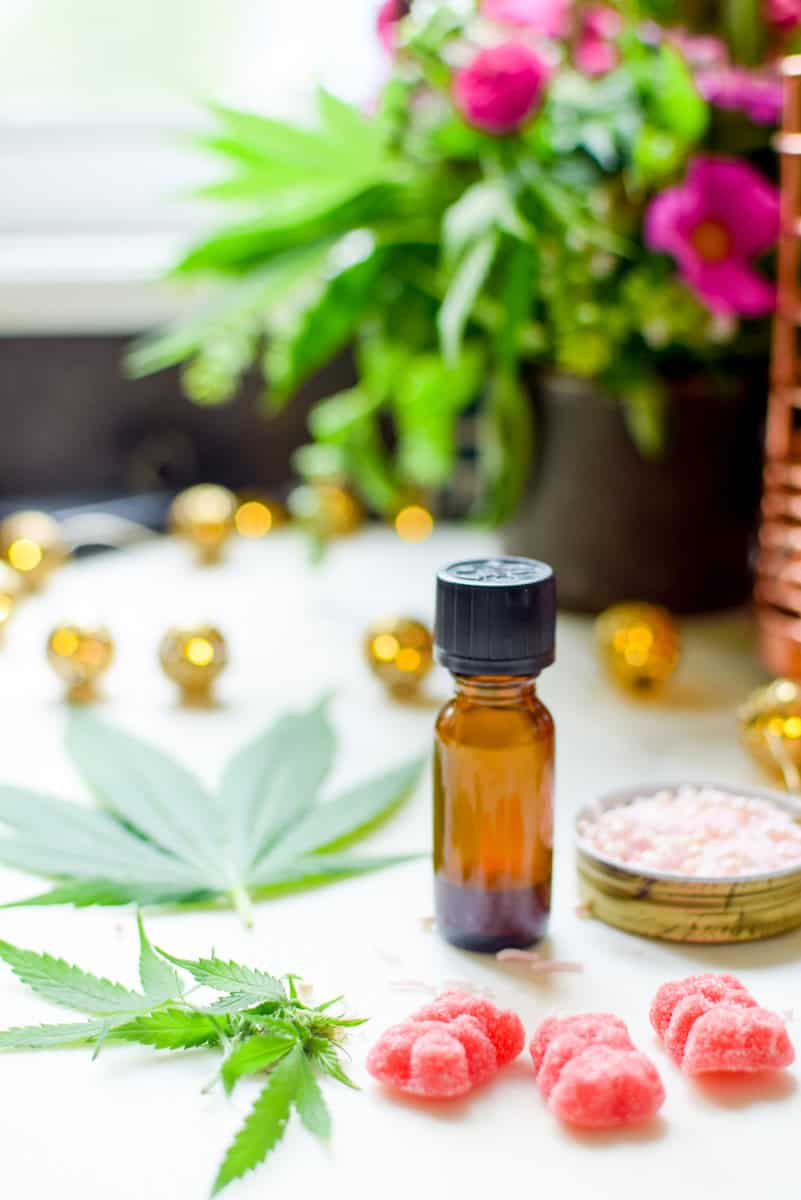
Extraction and Tinctures
Alcohol-based extractions are also popular option to make at home.
This method involves using high-proof grain alcohol to extract the cannabinoids from the plant matter.
The long way to make a tincture is know as the Green Dragon, and the shorter way is known as the Golden Dragon or QWET.
The main difference between these methods is the amount of chlorophyll that is released into the final product.
Once these tinctures are made, they can be used as-is, or taken one step further to create recipes like sugar, salt, homemade drinks or even oil.
By evaporating off the alcohol, you can create a product known as full-extract cannabis oil (FECO) or Rick Simpson Oil (RSO).
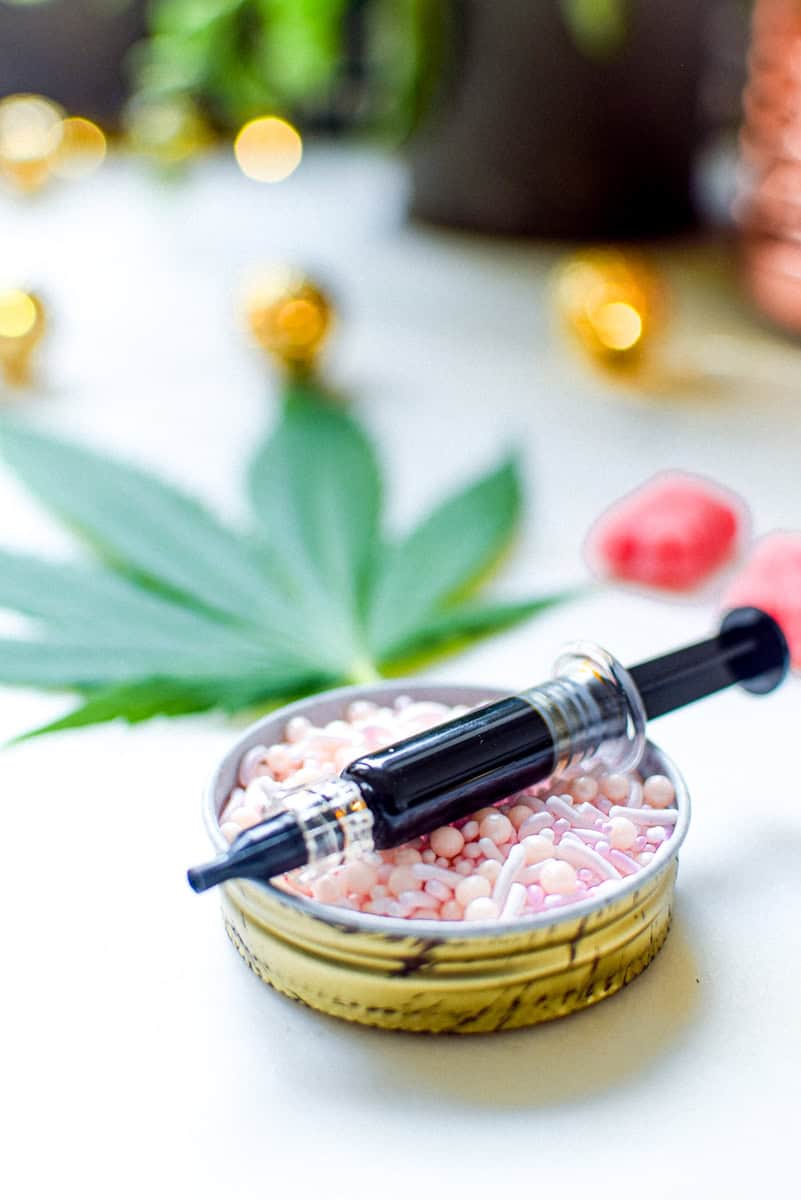
Store-Bought Products
Using store-bought cannabis products is the easiest way to make your own cannabis edibles.
Option like cannabis extracts and can be added directly to a recipe.
One of the biggest benefits of using a store-bought product is the accuracy in dosing.
Often accompanied by lab tests, it can be easier to determine the dose you are consuming, and thus it will become easier to monitor and assess your personal tolerance.
Shop Now
Shop with Emily
Shop Now: Bliss Cannabutter
Shop with Emily
Shop Now: Bliss MCT Oil
Shop with Emily
Shop Now: Bliss Beverage Booster
Shop with Emily
Shop Now: Bliss Caramels
Determining The Potency
The most difficult piece of the homemade edible puzzle is determining the THC content of the final product.
Unfortunately, it is nearly impossible to determine the mg of THC without lab testing.
This makes hard to accurately dose your homemade edibles if you don’t know how much CBD or THC you are consuming.
This opens up the risk of you either underdosing or overdosing, which will ultimately prevent you from experiencing the desired benefits.
To help you with this, I have created my very own edibles dosage calculator.
This will help you calculate potency in milligrams of THC for the whole batch, as well as per serving size.
While a calculator is no replacement for lab testing, this tool has been designed to help you get a guesstimate of the potency.

An Experiment & Commitment
Ultimately, consuming edibles is really a self-experiment that requires both curiosity and patience.
Experimenting with different dosages and duration times requires a commitment to the process.
It will likely take several tries for you to find the right dosage with predictable onset and duration times that you can rely on.
For this reason, I always recommend my online course students consume edibles in the safety of their own home – when they have time to stay put and enjoy the experience.
With the notoriously delayed onset and duration time of edibles, you should plan on devoting at least 6-12 hours to your experience.
During this time, plan to be safe in your home with no need to travel anywhere, no need to drive a car, and no need to operate heavy machinery.
Conclusion
We hope this beginner’s guide has given you the confidence to start your cannabis edibles journey.
Remember, learning to make edibles doesn’t have to be overwhelming—it can actually be fun and incredibly rewarding!
If you’re ready to take your skills to the next level, check out my Edibles Made Easy Course.
It’s packed with step-by-step instructions, pro tips, and everything you need to master the art of edibles. Transform your kitchen into an edible-making haven today!
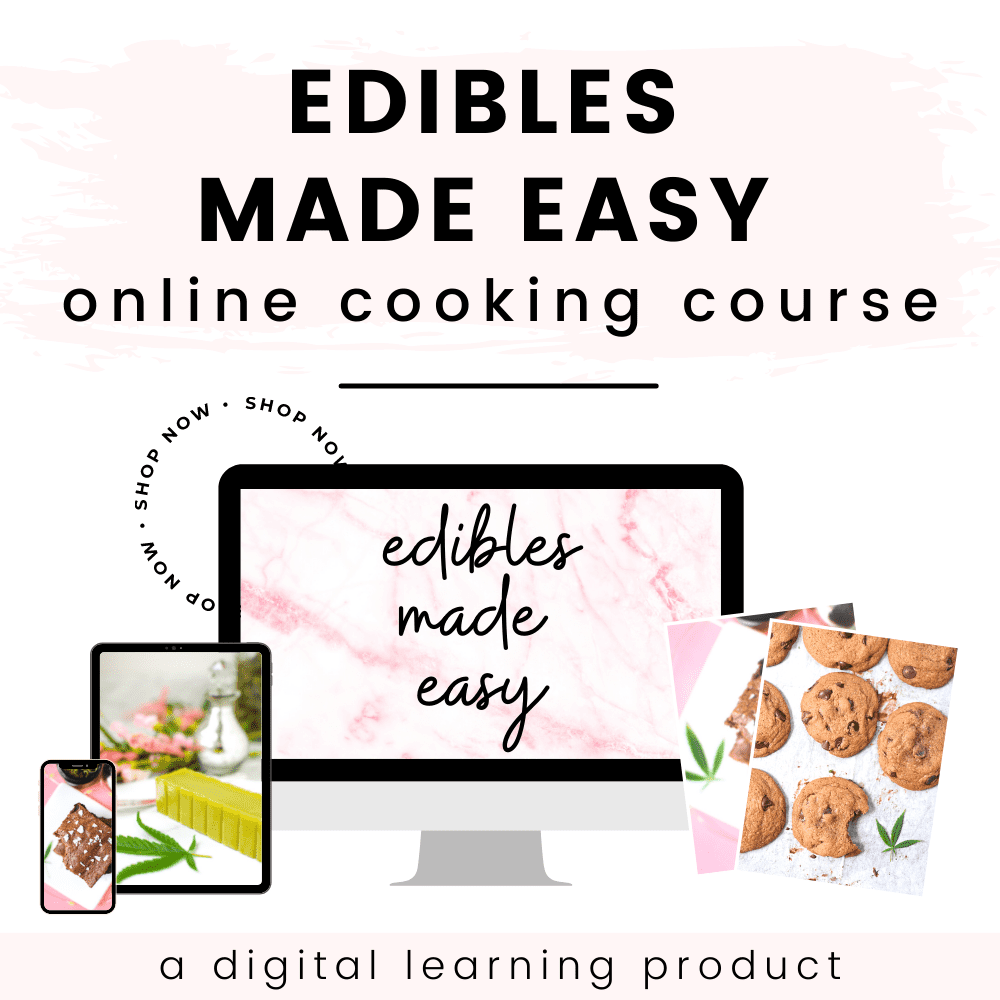
Take your edibles to the next level…
My Edibles Made Easy Online Cooking Course will teach you how to easily make cannabis edibles and topical recipes at home. This step-by-step video course will teach you how to infuse, extract, and create edibles with many different product types – all from the comfort of your own home.
More Edible Guides You Will Love
Ready to start making your own homemade edibles? Check out these tasty recipes to help get you started. P.S. You’re not limited to just sweets – check out these healthy cannabis recipes.
Articles & How-To Guides
Lecithin for Edibles: Where, When & Why We Use It
Articles & How-To Guides
How to Decarb & Make Edibles with Cannabis Concentrates
Articles & How-To Guides
Do You Want Chlorophyll In Your Edibles?
Shop with Emily

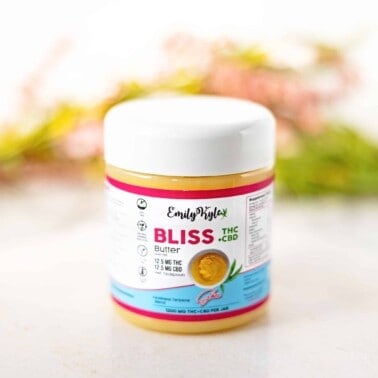
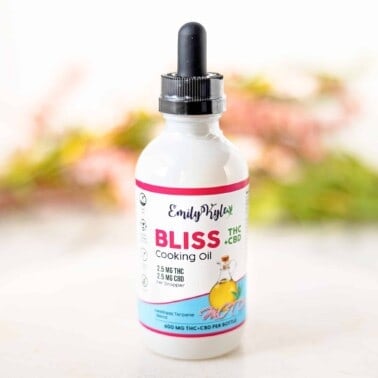
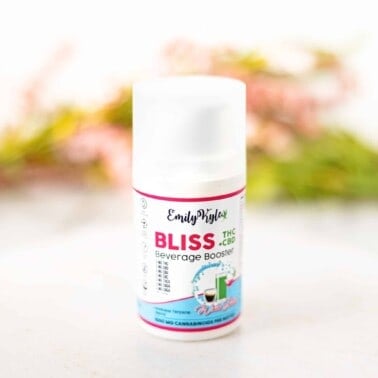
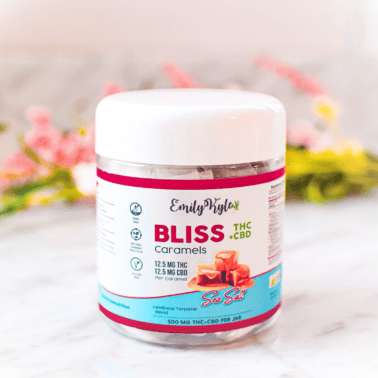
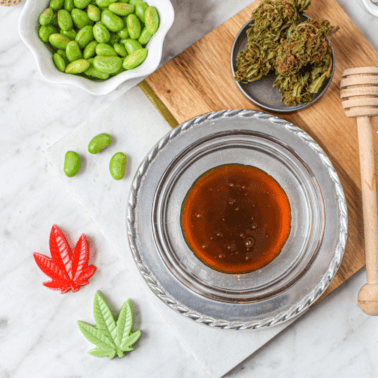
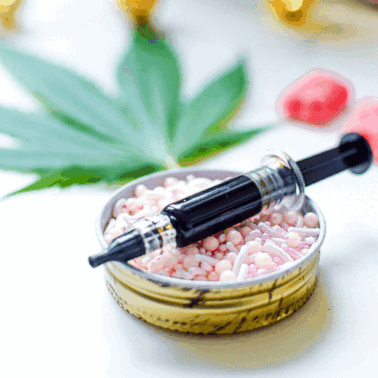
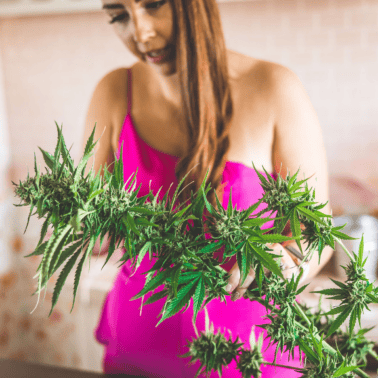
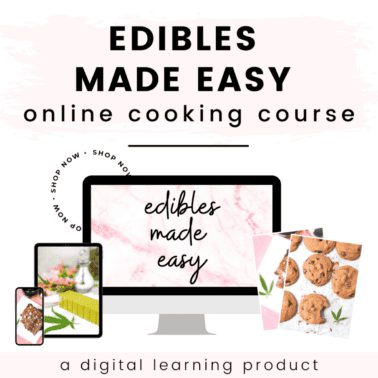









I just made gummies 7 grams of flower, decarbed, to 1/2 cup of MCT OIL. Cooked in double boiler, whisking constantly, for 10 minutes. Then, in the molds. Cooled-too soft. Put in fridge, then freezer to get them out of molds. Now, after sitting overnight, I have soft little puddles of gummies and a layer of oil in the pan underneath. Can I reprocess and put the oil back in? What a mess.
Hi Kim. Did you follow Emily’s recipe here: https://emilykylenutrition.com/cannabis-gummies-with-oil/?
It sounds like your gummies didn’t fully emulsify, which might be why the oil separated or you didn’t have enough gelatin. Did you use any lecithin? That can help keep the oil and gummy mixture together. You can melt everything back down, add in extra gelatin, mix well, repour and see if that helps.
Hi Emily!
I’m wondering how to go about producing a MCT infused oil with decarbed cannabis concentrate. Do I still need to go the secondary low and slow cook with a slow cooker/sous vide, or can I just add the decarbed concentrate straight to the oil and it be ready to go? Thanks so much for your time, really enjoy your content.
Hi Abbey! You can skip the secondary cook — just mix the decarbed concentrate directly into the MCT oil thoroughly, and it should be good to go. Sometimes warming the oils and concentrate make them easier to work with. Thanks so much for the kind words!
Wow for a senior that’s a lot wow here to learn
Hi Diane. Absolutely! There is A LOT of information in the world of cannabis edibles, no matter your age or experience level. There’s always something new to discover and learn and we are here to help guide you through it all. Feel free to join our private community to learn along with others on their cannabis journey: Join Now: Well With Cannabis Community. We are here to support you, so don’t ever hesitate to reach out with any questions or for extra support. Sending you good vibes Diane!
Good afternoon,
I just wanted to know if you have a recipe for gummies with corn syrup?
Hello, Yvonne. Thanks for reaching out! I’m afraid I don’t currently have a recipe for gummies using corn syrup 😔 However, I’ll be sure to let you know when one becomes available in the future, I appreciate the request.
Hi Team, thanks for this article. I have 700ml of green dragon.
15 % THC level
I used 30g of bud
800ml alcohol reduced down to 700 in total.
Would you be able to tell me how much THC there is per ml?
Also, I want to make gummies but worried about the tiny amount of FECO would have by evaporating the alcohol off so for now I’m using as is. Is there anyway to create gummies using the current green dragon or likewise infuse other sweets and know what strength dose I’m adding?
Thanks in advance, love your work
Hi Dave. Based on your calculations:
700ml (2.91 US-cups) = Total THC 3,749.17
3,749.17 ÷ 700 = 5.35mg per ML
If you’re using 1ml dropper, there are 20 drops. Each drop is 0.05ml = 0.26mg THC
Just to give you a general idea, it takes roughly 5-10 grams of flower to produce 1 gram of FECO, on average.
Check out Emily’s guide: Infuse Store-Bought Gummies with Cannabis Tinctures which allows for accurate dosing by the drop.
We appreciate your support! I hope this helps!